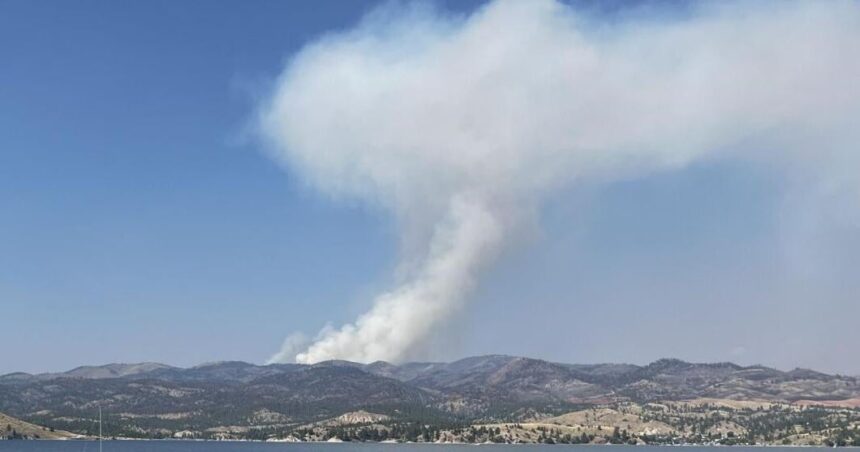Michael Downey, Drought Program coordinator for the Department of Natural Resources and Conservation, predicts that drought conditions in Montana will likely continue into early winter.
Downey shared this information at the Governor’s Drought and Water Supply Advisory Committee meeting in Helena on Thursday, Aug. 15. Reports indicate varying conditions across the state, with a prevailing dry trend, although conditions have been worse in the past.
In west-central Montana, severe drought conditions have led to wildland fires and extremely low flows on the Blackfoot and Clark Fork rivers. The Blackfoot River is experiencing its lowest flows in 24 years, resulting in fishing closures and irrigation water loss due to calls made by Fish, Wildlife & Parks to exercise its senior water rights.
People are also reading…
Stephen Begley, water rights and instream flow specialist for FWP, mentioned that the Blackfoot River has faced some of the earliest calls in years due to the drought. Despite exercising water rights, streamflow has not improved.
Begley expressed concerns about the continuous decline in streamflow, indicating that the river’s conditions have worsened over time. Factors such as record warm temperatures in July and abnormally dry winter and spring seasons have contributed to this predicament.
The low flows on the Blackfoot River pose a threat to bull trout, a threatened species native to the area. Similar concerns exist for arctic grayling in the Big Hole River and other trout species facing stress due to the drought.
Although recent rain and cooler weather have lifted some fishing restrictions, closures still remain on certain rivers in the state. Stream flows have been below average since June, and there is little relief in the near future as September is typically a dry month.
Aaron Fiaschetti, U.S. Geological Survey hydrologist for Wyoming and Montana, noted that this summer’s stream flows are reminiscent of the severe conditions experienced in 2016. Despite the drought, Cory Calnan from the Department of Natural Resources and Conservation mentioned that Montana has fared better compared to neighboring states in terms of fire incidents.
Although quick initial responses and rainfall towards the end of July have controlled most fires, the Tongue River complex fires have burned about 60,000 acres in southeastern Montana, the largest area affected this season. Continued warm weather and winds may escalate the spread of prairie fires in the region.
Additionally, high winds have caused widespread damage across the state this summer, with storm events affecting areas from Missoula to Billings and Miles City. Jake Ganieany from the Department of Military Affairs’ Emergency Services highlighted the impact of these winds, reaching speeds of up to 90 mph.





